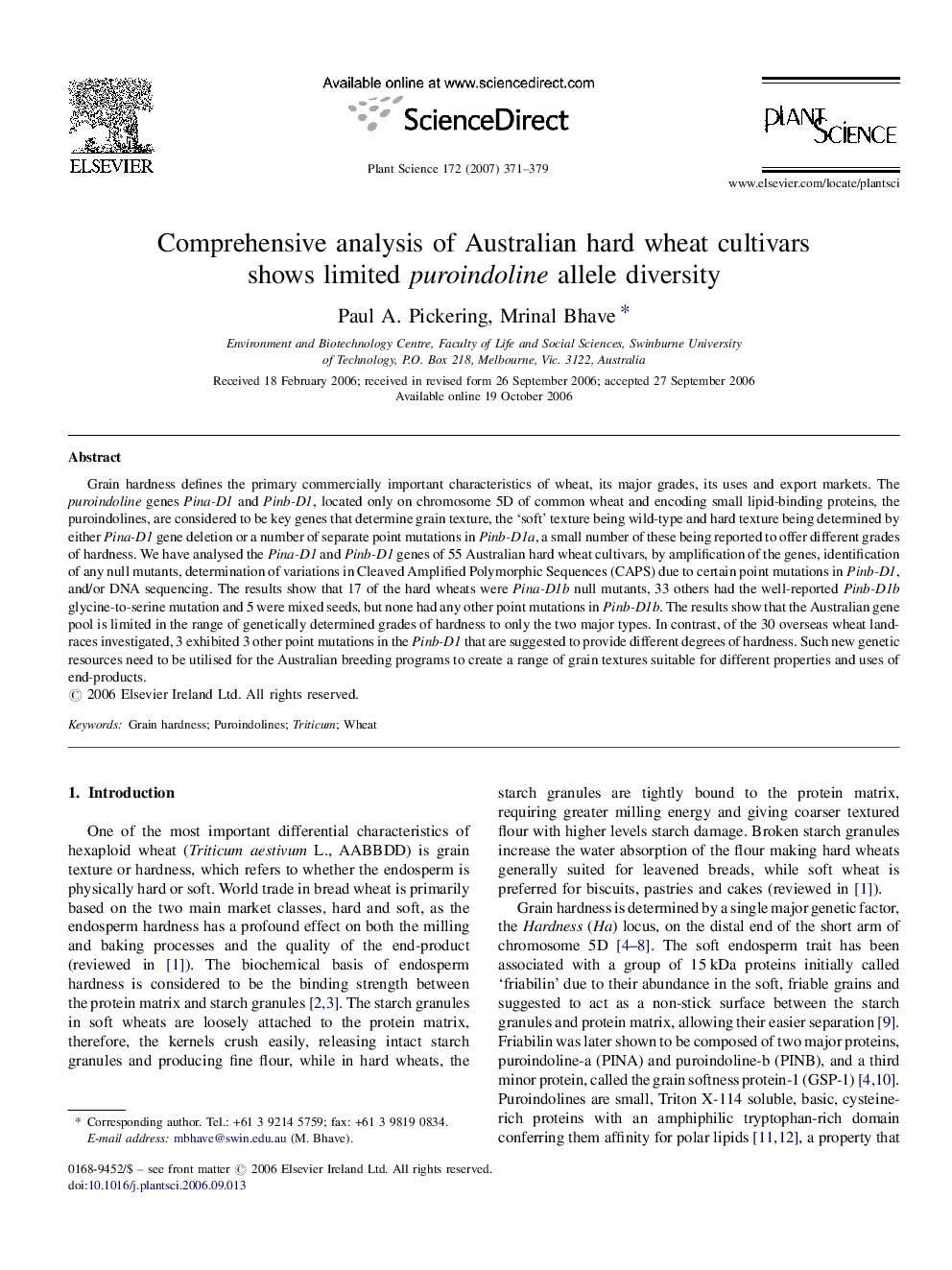| Article ID | Journal | Published Year | Pages | File Type |
|---|---|---|---|---|
| 2018386 | Plant Science | 2007 | 9 Pages |
Abstract
Grain hardness defines the primary commercially important characteristics of wheat, its major grades, its uses and export markets. The puroindoline genes Pina-D1 and Pinb-D1, located only on chromosome 5D of common wheat and encoding small lipid-binding proteins, the puroindolines, are considered to be key genes that determine grain texture, the 'soft' texture being wild-type and hard texture being determined by either Pina-D1 gene deletion or a number of separate point mutations in Pinb-D1a, a small number of these being reported to offer different grades of hardness. We have analysed the Pina-D1 and Pinb-D1 genes of 55 Australian hard wheat cultivars, by amplification of the genes, identification of any null mutants, determination of variations in Cleaved Amplified Polymorphic Sequences (CAPS) due to certain point mutations in Pinb-D1, and/or DNA sequencing. The results show that 17 of the hard wheats were Pina-D1b null mutants, 33 others had the well-reported Pinb-D1b glycine-to-serine mutation and 5 were mixed seeds, but none had any other point mutations in Pinb-D1b. The results show that the Australian gene pool is limited in the range of genetically determined grades of hardness to only the two major types. In contrast, of the 30 overseas wheat land-races investigated, 3 exhibited 3 other point mutations in the Pinb-D1 that are suggested to provide different degrees of hardness. Such new genetic resources need to be utilised for the Australian breeding programs to create a range of grain textures suitable for different properties and uses of end-products.
Related Topics
Life Sciences
Agricultural and Biological Sciences
Plant Science
Authors
Paul A. Pickering, Mrinal Bhave,
